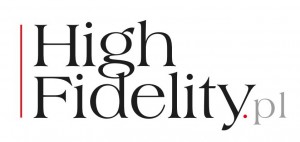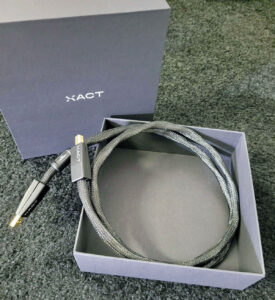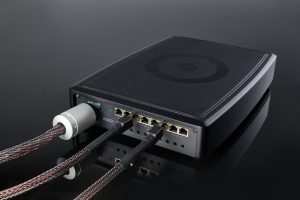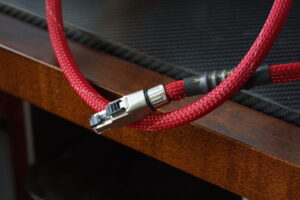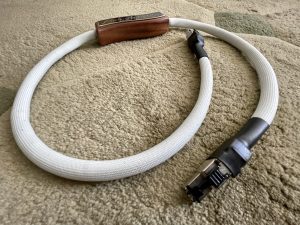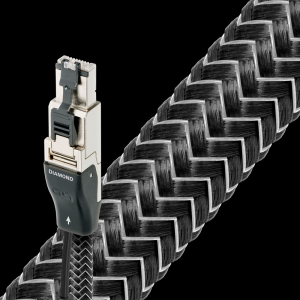Acoustic Revive is a Japanese company founded in 1997 and led by Mr. Ken Ishiguro. It specializes in audio signal cables, anti-vibration products, but also has a range of innovative products, the ideas behind which usually come from the University of Tokyo. We are testing a system for data transmission and LAN conditioning.
When, at the beginning of July, a parcel from Japan arrived, with boxes of Acoustic Revive products for the transmission and conditioning of LAN signals neatly stacked inside, history came full circle in a way. Twelve years ago I published a test of the company's LAN cables and filters, models LAN-1.0 PA (cables) and RLI-1 (filters), which still pops up in search engines every now and then. And this is because of the big stir it caused among Internet users, especially those with a technical background and IT orientation; HF | № 95, 16 March 2012, test HERE.
Today we are in a completely different place. What I heard during the test, namely that LAN cables change the sound and differ from one another in this respect, and that LAN filters also affect the sound of the system, is common knowledge. What's more, it turned out that this was also known at the time, but that this knowledge was reserved for certain companies and engineers associated with the defense, medical and, as it turns out, IT industries, who were not afraid to experiment, even if they did not fully understand why 'it' worked.
The problem was how this knowledge was acquired. It was acquired through experience and, although confirmed by measurements, it was difficult to 'translate' these measurements into audio language—changes were revealed in them, but it was not clear why they affected the sound at all. But that's what listening tests are for, because humans have one of the world's greatest measurement systems—a brain with two ears.
Acoustic Revive, whose LAN cables and two types of filters we are reviewing this time, has known this for years. It has in its range Ethernet (LAN) cables and two different RFI filters: respectively, LAN Quadrant Triple-C and the RLI-1GB Triple-C and RLT-1K. The first filter is a new version of the RLI-1 model that I once tested, while the RLT-1K is a new version of a filter that I have also shown you in the past. All three are based on Acoustic Revive's own developments, introduced into its various products in recent years. We are talking about Triple-C copper as conductors and a mineral called Kiyoh-stone, which is an important part of noise filtration and vibration minimization.
LAN Quadrant Triple-C
Acoustic Revive's latest Ethernet cable, launched in 2022, is very easy on the eyes: there are as many as four separate cable runs terminated with plugs on both sides.
Separating data signals from each other, as well as data from clock signals, and running them in separate cables is one method of minimizing interference. Ken Ishiguro, the company's chief executive, points out that commercially available LAN cables made of a single wire with strands twisted together from thin wires produce stray currents known as 'crosstalk' which makes signal transmission much more difficult. This Japanese manufacturer used this technique for the first time relatively long ago, only that in USB cables, models USB-1.0SP and USB-5.0PL; a test in High Fidelity HERE PL.
But this is common knowledge. After all, this is exactly the same idea as behind the design of AC power cables from WK Audio, Argento or KBL Sound, which also separate the runs by running them separately, in fact in separate cables. This method is also often taken up by loudspeaker cable manufacturers, running separate runs for the positive and negative speaker terminals. This is all because it is simple and effective. The disadvantage of this approach is the high price—instead of one cable, we have two, three or, as in this case, four.
The tested LAN cable is made of very thin copper wires, made using a technique bearing the company's Triple-C name. As it happens, High Fidelity was one of the first magazines in the world, and certainly the first outside Japan, to receive Acoustic Revive cables using Triple-C PC copper for testing and to publish such a test (№ 126, 1 October 2014). Just a month ahead of us at the time was the Japanese magazine Audio Accessory.
The material, called PC Triple-C, or Pure Copper-Continuous Crystal Construction, is obtained in a process similar to forging in which the wire is repeatedly struck. The impacts have an appropriate angle and direction, chosen through experimentation. As a result of this treatment, it reduces its volume by 70%. This is an unequivocal reference to Japanese sword-forging traditions, which is why Acoustic Revive advertisements used to feature an image of a katana blade.
Although this material does not have some particularly high purity expressed in 'N' scale (6N, 7N), in fact the barriers between crystals are very low in them. Mr. Ishiguro even says that the transitions are less visible than in the best copper yet invented, namely PCOOC-A (Pure Copper Ohno Continuous Cast Advanced). Triple-C copper, in small quantities, is produced by a separate part of the Furukawa concern, Fine Chemicals & Materials (FCM). In Acoustic Revive cables, the solid-core wires feature a Teflon dielectric. Their diameter is the smallest that can currently be achieved with this technique.
To minimize vibrations around the conductor and dielectric, silk ribbons are wrapped around the conductor to prevent generating of static electricity and thus provide, in the manufacturer's words, 'an organic and even sound'. The shielding is split into four parts using Triple-C PC copper braid, which is claimed to cause no sound degradation and has 'excellent shielding properties in all frequency ranges'.
The cables are terminated with German Telegärtner plugs with gold-plated contacts. This is a category 6A, class E plug providing transmission speeds of up to 10 Gbps (up to 250 MHz). It has a very robust body and a convenient latch. However, as its dimensions are a tad larger than those of general-purpose plugs, it is important to check that our router accepts it. The only thing that doesn't quite appeal to me is the connection of the cables to the plug - it's done with a not very elegant heat shrink sleeve.
RLI-1GB Triple-C
LAN filters have grown in popularity with the growth of awareness associated with streaming. Although they had previously been widely used in so-called 'critical' industries, the audiophile industry did not immediately take notice of their effectiveness, despite the fact that for a long time file playback was almost exclusively based on local files stored on NAS drives. And that is, after all, at least as many as two LAN cables in the circuit—from disk to router and from router to file player. Today, this these two are augmented by yet another one in systems where a separate LAN switch is used.
Acoustic Revive offered its own version of such a filter already a dozen years ago. Its contemporary counterpart, the RLI-1GB Triple-C model uses PC-Triple C copper as the conductor and fluororesin as the dielectric, which has a very good relative dielectric constant and, as we read in the manufacturer's materials, realizes an ultra-fast transmission rate. Shielding is provided by copper foil. These treatments have made it possible to increase the data transmission rate to 1 GB/s, as reflected in the change in name.
The form of the filter is very similar to the one we know from the RLI-1 version. It is a short section of cable (164 mm) ending in a LAN plug on one side and a small cuboid measuring 47 x 21 x 21 mm on the other, in which the filter elements are placed. However, the color has changed—instead of black it is now red. We should add that the connector, although gold-plated, is not as solid and as well shielded as those on the Quadrant Triple-C cable.
The design is described by the manufacturer as follows:
Acoustic Revive RLI-1GB has succeeded in reducing transmission noise to extremely low levels by combining an isolation transformer and a coil to minimize common mode noise (sub. - ed.). As can be seen from the measurement results below, the noise-cutting effect of the RLI-1GB is significantly better than that of medical LAN isolators, which rely solely on isolation transformers.
RLI-1GB-TripleC, ACOUSTICREVIVE.jp HERE , accessed: 18.07.2024.
Measurement results published by the manufacturer, still for the previous version - fig. Acoustic Revive
The manufacturer also declares that, 'thanks to an audiophile approach to design,' the RLI-1GB Triple-C does not generate side-effects such as a feeling of loss of energy and reduced dynamics, which is unavoidable when using, as we further read, LAN isolators used in medicine. Attention is also drawn to the cumulative nature of the changes that the Acoustic Revive filter brings to the sound—the more of them in a given system, the greater their impact is expected to be.
RLT-1K
Acoustic Revive has a whole range of products in its portfolio for terminating unused sockets. The first versions were primarily aimed at protection by means of shielding, and later a vibration-damping component was added. The latest versions include completely advanced filters with artificial ground, bearing the company name Reality Enhancer Plugs. There are plugs for RCA and XLR sockets (test HERE ), or for sockets with AC voltage CS-3K HERE.
For many years, this manufacturer has also offered filters of this type for file playback devices: the RUT-1filter for USB sockets, now in the RUT-1K version HERE, as well as a filter for Ethernet (RJ48) sockets like the RLT-1, now in a version with a 'K' at the end. The 'K' signifies the use of one of Acoustic Revive's most expensive materials ever, namely a mineral called Kiyoh-stone.
Kiyoh-stone
The new version of the filter is identified by the letter 'K' in its name, which also appears on a sticker applied to the body.
For the first time, Kiyoh-stone was featured in Acoustic Revive products in 2021. We had already written about it when we tested the acoustic panels RWL-III Absolute and it was already known then that further products with 'K' were in the pipeline, for example a phono mat, an AC voltage filter and artificial ground and cable stands.
As Mr Elia Hontai-san of Muson, Acoustic Revive's representative outside Japan, wrote to me at the time, Kiyoh-stone is a rare earth element whose main ingredient is aluminum silicate. It is available in only one place in Japan, in Gunma Prefecture. This is no coincidence, he says, as the same prefecture is where Acoustic Revive is based.
The property of this material that Mr Ishiguro-san was keen on is that, when vibrated, it easily produces negative ions of high intensity, the maximum of which is in the far-infrared rays. Kiyoh-stone generates up to 40 times more ions than tourmaline. This material was used in the form of paint, which was painted on the inside of the filter. Elia Hontai adds that it is one of the most expensive materials of this type available on the market, and is available only in limited quantities.
I did not mention it, but along with the RCA and XLR filters I also received two LAN filters RLT-1 for sockets of this type, and plugged them into the free sockets of the Ayon Audio CD-35 HF Edition SACD player straight away. This time I wanted to see how they would behave plugged into the sockets of the Silent Angel LAN switch.
The Manufacturer says:
Because network equipment enclosures are less robust than most audio equipment, they are even more prone to vibration from the speakers, leading to serious degradation of sound quality. The RLT-1 features a robust and tough body made of 2017S aerospace aluminum alloy (duralumin) and features built-in natural quartz resonators in two areas of the body to allow very effective vibration control.
LAN Terminator RLT-1K, ACOUSTICREVIVE.jp HERE, accessed: 18.07.2024.
Acoustic Revive's filter is based on an earlier development called the X-terminator, whose 'father' is Takashi Kanai (sound subjectivity engineer at SONY). It has been slightly redesigned and added the company's vibration damping technology, a quartz 'pill' glued onto the metal body of the socket. The filter takes the form of a 12 x 12 (14.5 with LAN lever) x 71 mm (with LAN connector) aluminum stem, terminated with a LAN plug. The fact that we are dealing with the 'K' version is indicated by the red element right next to the plug. We should add that the company says the Denon Link and Accuphase's HS-LINK sockets also have a good effect on the sound.
SOUND
HOW WE LISTENED
Acoustic Revive cables and filters were tested in the Hight Fidelity reference system. I say 'cables' and 'filters' because there were more of them in the system than usual. From the router, powered by the JCAT Optimo 3 Duo, the signal ran to the Silent Angel N16 LPS LAN switch (cable length 1.55 m).
In the switch, a short cable (30 cm) connected the two sections, and the signal to the Lumin T3 file player was routed via another cable (1.55 m). I also used four RLI-1GB-TripleC filters in the system, two per cable—at the beginning and at the end. The RLT-1Ks, in turn, were plugged into the LAN switch—that was as many as five of them.
Acoustic Revive cables have been compared to Tiglon TPL-2000L LAN cables. Together with the Silent Angel N16 LPS LAN switch, with its two modules in series, powered by the Tiglon TPL-2000 cable, they are part of the system I work with on a daily basis; more on that HERE PL.
The test was conducted as AA/BB/A and BB/AA/B comparison with A and B known.
RECORDINGS USED FOR THE TEST - a selection
I remember it well, how several times in my professional life I encountered something that was very good and yet did not improve the sound of my system, but changed it. There were times when these were changes that in the long run turned out to be wrong and I went back to the previous setup. But there were also those whose true value became apparent after further changes that improved the sound. It was as if their merits were hidden beneath what the system could offer at the time.
It's a coincidence, but it usually happened with Acoustic Revive products: the Harbeth M40.1 speaker stands, and the Triple-C and later Absolute series cables. It seems to me that I am dealing with a similar case with the LAN Quadrant Triple-C cables. For when I swapped out all three of Tiglon's cables, which I am very happy with, that is from the router to the LAN switch, between the two sections of the switch and finally between the switch and the file player, I heard a significantly different sound from what I had before, which I initially could not get used to.
LAN Quadrant Triple-C
Acoustic Revive cables show a very precise sound with lots of information, Tiglon rounds everything off, slightly 'slows down' which in the absolute majority of cases is a good thing. And that's because files streamed from the web need it. The AR cables cleaned the sound of this noble patina and allowed much more details and subtleties to be heard from the recordings. Even with such old material as that from The Early Mills Brothers album.
Brilliantly remastered from shellac records and released in 2000 by Finest Recordings, it brings the deep, full sound of the Mills brothers' voices to life. At last! One would like to say. For many years, reissues of this type of material seemingly assumed that there were no low notes in it. And indeed there is no lower bass, but there are harmonics of it, and if one brings them out skillfully, one will feel that the sound is low, as in the "Paper Doll" track from this album.
With the Acoustic Revive cables it sounded a little higher and without such a boosted lower end as with the Tiglon cables. However, the AR better showed bodies of sounds, more clearly showed their separate 'entities' on stage, even though this is after all a mono recording. In some special way, the tested cables allowed this material to sound more like it was recorded contemporaneously, and the Tiglon cables played it with deliberate styling. Which also came out with the Benny Goodman's "Sing Sing Sing (With a Swing)" (Live) from an album with his best songs.
This is very dynamic, even explosive music, and in addition this particular piece was recorded live, which further emphasizes the energetic nature of the presentation. The Acoustic Revive cables showed it in a resolving way. Resolving, meaning differentiated and rich. There is a lot of details and subtleties in it, and this is something to keep in mind if we want to achieve a particular sound of music from files in our system. Thanks to this, the leader's long solo, stretching almost through the whole track until 7.20, played very quietly, sometimes even verging on a whisper level, was very easy to follow.
All the more so because all the elements 'beside' it, like the drums in the right channel, or the sounds of the audience underneath, were all clear and buckled into a whole. The band sounded like a magnificently crafted Swiss watch, if I may resort to that cliché comparison. What I mean is that not only did everything work flawlessly, but the quality of this 'mechanism' was tangible, even palpable.
As with all of the company's products I mentioned above, my initial impression was that the LAN Quadrant Triple-C cable slimmed down the sound. This is not the case. It's Tiglon that wraps it in a cocoon of soft bass. The AR shows more information, which is why it can appear less 'bassy.' It conveys the low notes in a fast and disciplined way, which gave Paul Chambers' double bass in the John Coltrane's "Giant Steps" track from the album of the same title a "flow" and gave it a faster tempo.
Also Wynton Kelly's piano, placed in the right channel, recorded in a rather under-detailed way, rather smoothed out and muffled in the treble, sounded clearer with the Acoustic Revive cable. However, it was not artificially detailed, that is not the case here. Rather, it was about a clear tightening of attack and decay, while leaving a meaty sustain, i.e. the core of the sound(s).
The acoustic guitar of Plinio Fernandes playing an Ennio Morricone track was saturated and had a deep sound with the tested cables. It also had a brighter midrange and a less emphasized breakthrough with the bass than with the Tiglon. I keep comparing the two cables because it's a great example of how differently you can 'tune' a system and it will sound great, albeit differently, every time.
As I say, Acoustic Revive plays 'higher.' It doesn't sharpen the sound at all. Even the producers' distortion of Kylie Minoque's vocals in the "My Oh My (with Bebe Rexha & Tove Lo)" remix was not too bright And when the low notes of the electronic bass and the accompanying big electronic drum came in, I got a big, full sound. And very fast at that too.
RLT-1K
What I heard when I added the RLT-1K filters to all the LAN cables in the system, at both ends, surprised me quite a bit. I expected them to deepen what I had heard before, to push the sound even further in the direction of speed and selectivity. And then they warmed the sound and deepened it. It wasn't the same warm bass as with the Tiglon, but it was now noticeably warmer than with the Acoustic Revive LAN cables alone.
Minogue's voice was shown further into the mix and was no longer so isolated from the surroundings. The bass was noticeably richer and still remained fast and accurate. I noticed similar changes in the sound of Fernandes' guitar. With the filters it had more body, and the musician's breath, clear and distinct before, now 'blended' nicely with the sounds reflected from the 'walls'. It was, quite simply, a better presentation. And the Mills Brothers were back to a warm, deep sound.
And now, not that this had previously bothered me about the sound of the LAN Quadrant Triple-C cables themselves. However, it was so different from what I was used to before that my initial reaction was a little overstated. Now, with the filters, the sound again tilted towards more weight and warmth. But it didn't go that way, but rather - as I said—it tilted towards it. For the basic tone of the presentation was still set by the LAN cables.
RLT-1K
The changes in sound after the RLT-1K filters are plugged into the entire first section of the Silent Angel LAN switcher are clear. As with the two earlier products from this company. The RLT works in a similar way to other filters/ground conditioners of this type. That is it calms the presentation 'from the down up', i.e. it brings order to small information. And it also allows better differentiation of musical signals. This is something that has been repeated time and time again.
The differentiation in question leads to a better understanding of the track. For both the low bass entering right at the beginning of the "Show Me" from Deep Purple's latest, just-released album, and guitars recorded on a couple of tracks of Al Di Meola's equally fresh Twenty four album, as well as the sound of the piano and the overlaid, delayed and repeated sounds of the instrument mechanism underneath in "02. 07" by Beving and Vos, it was all clearer, stronger, more energetic.
This resulted in a more selective and resolving sound. The change was a big one, which shows what potential for manufacturers of networking equipment lies in such measures—after all, LAN filters, circuits that condition their grounding and reduce vibrations can be 'sewn' inside the device. And they change the sound really strongly. Changes we might add, for the better.
That is to say, it will not always and everywhere really be 'better,' at least subjectively. Objectively, by all means, that's the direction we go in audio, regardless of the type of product. But files have a lot of characteristics I don't like in sound, like low harmonic fill and timing problems. Plugging in the RLT-1K improves both of these aspects. But it also allows you to see more clearly what problems this or that stream, master or release has. So we have to have a really good system for such a purchase to make sense, and we have to prepare ourselves for the fact that poor recordings will sound worse. But it should make up for it with something else—the good ones will play better.
Summary
All three Acoustic Revive products designed for streaming systems, i.e. playing files from the internet or NAS drives, share a common DNA. And so they should, after all they are based on similar solutions, with Triple-C copper at the forefront. The issues are: speed, resolution, differentiation, transparency. These are elements that will change with them for the better. For much better, we should add.
These products will also show what we need to change in the system, because they don't round off, they don't make the sound more pleasant. They go deep into it, energizing the presentation, making it more interesting, but also more challenging. It's more about listening to the music all the way through than in the background. You can't fall asleep with them with the amplifier's volume turned up.
So if you are serious about listening to music, give all three products in this test a chance: the LAN Quadrant Triple-C cables, preferably in tandem or trio (!) with the RLI-1GB Triple-C filters, and the RLT-1K ground filter/conditioner preferably in a group. This transforms the sound of the system in a direction that may at first seem uncomfortable, especially if the sound of the files was previously laid back, smoothed out and enjoyable with us. With Acoustic Revive in the system o will be a much more believable presentation and a more true sound.
Price (when reviewed):
LAN QUADRANT TRIPLE-C – 5000 PLN/1 m
RLI-1GB Triple-C – 1890 PLN
RLT-1K – 1700 PLN
SEKIGUCHI MACHINE CO., Ltd.
Contact: YOSHI HONTAI | MuSon Project, Inc.
ACOUSTICREVIVE.jp
MADE IN JAPAN
Provided for test by: MUSON PROJECT
Text by WOJCIECH PACUŁA
Translated Marek Dyba
Images by High Fidelity















